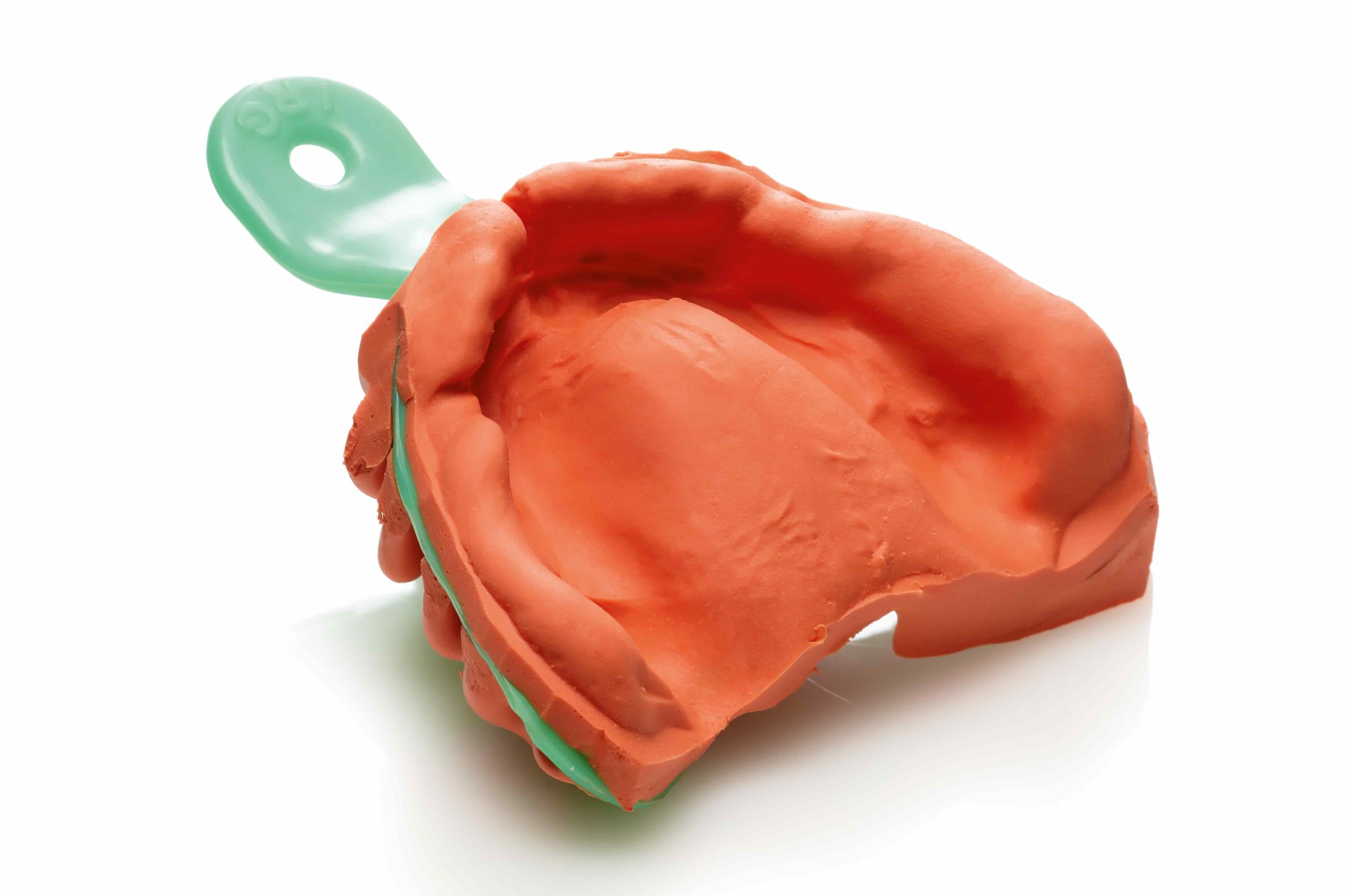
Impressions for edentulous patients are a much-debated topic, as there is still great diversity amongst clinicians, who use different techniques dictated by their personal school of thought rather that conclusive literature evidence [1].
Furthermore, within the scientific community there is still a certain amount of confusion regarding the need to use a two-phase technique for edentulous patients, as some randomised controlled trials have shown that there are no patient-perceived differences regarding the various clinical and extraclinical (improved quality of life) parameters [2,3].
Didactic distinction based on purpose and the impression tray and materials used
However, from a didactic perspective, it is necessary to make an appropriate distinction between these two types of impression based on their purposes and the impression trays and impression materials used[4].
Primary or preliminary impressions
- These impressions must be extensive enough to give the technician a good basis on which to fabricate a custom impression tray.
The recording of the entire basal area of the edentulous jaws, the full extent of the vestibular fornices and the anatomical elements that will support the future prosthesis must be reproduced in the primary impression in order to fabricate a custom impression tray that takes them into account; - they are generally taken using alginate with a stock impression tray or an impression tray specifically designed for edentulous patients (Schreinemaker).
The latter are shaped to follow the anatomy of the edentulous patient and can therefore adapt perfectly to the oral cavity without resulting in overextended impressions, which can occur when stock impression trays are used in patients with resorbed jaw bones [5]; - when taking the impression it is advisable to choose an impression tray that matches the size of the arches and apply appropriate wax rims, so as to leave an alginate thickness that is not excessive in certain areas [6].
Secondary impressions
- The purpose of these impressions is to record the muscle dynamics, in order to create a prosthetic margin that is in perfect harmony with muscle function;
- they are taken using custom impression trays and elastomers after being provided with appropriate wax rims.
As far as secondary impressions are concerned, custom impression trays, on which the success of the impression depends, deserve more in-depth attention.
Custom impression trays: models, techniques and materials
Custom impression trays are fabricated using self-curing resin or light-curing resin on gypsum models based on the primary impressions, and can be built either slightly distant from the model (spaced trays) or in direct contact with the model (close-fitting trays), obtained from the primary impression [7].
Spaced trays and the mucodynamic technique
In the former case, the “spaced trays” are fabricated having placed a sheet of spacer wax over the gypsum model, and the clinician can therefore take the secondary impression using the “mucodynamic” technique, i.e. by deploying all the patient’s muscles when taking the impression [4].
Close-fitting trays and the mucostatic technique
In the latter case, on the other hand, “close-fitting” impression trays are fabricated in direct contact with the model, and the clinician will take a secondary impression using the “mucostatic” technique [8].
With these impression trays it becomes essential to check their congruence with the arch of the primary impression, in order to identify areas of compression with the tissues due to the curing-induced shrinkage of the resin used [9,10].
The proper material viscosity and impression tray combination
The various custom impression trays and the different techniques then need to be combined with materials of different viscosities, for which some authors recommend 1) medium-viscosity elastomers combined with spaced impression trays and 2) low-viscosity elastomers with close-fitting impression trays, in order to optimally adapt the mucosa to the bone plane below while taking the impression [7].
Thermoplastic paste or elastomer rims
Both types of impression tray should nevertheless be appropriately rimmed, in order to obtain a peripheral seal at the base of the prosthesis, which is indispensable for ensuring its suction effect [4,5,7].
This rim can be created using thermoplastic paste or elastomers.
Using thermoplastic paste has the advantage of being able to create the rim sequentially for the various parts of the impression tray, whereas when using elastomers the entire impression tray must be rimmed in one or two stages. However, if the impression is taken using the same material used for the rim, a single mass can be obtained.
The ideal alginate for impressions in edentulous patients
There are therefore several differences between preliminary and functional impressions for edentulous patients.
Clinicians must know not only the advantages and limits of both, particularly in relation to the specific case, but also how to carry out the individual phases that precede each impression technique properly.
Zhermack manufactures a vast range of alginates with characteristics that are suited to use in edentulous patients for the fabrication of full removable dentures.
More specifically, Neocolloid is an alginate with a long setting time designed for obtaining adequate impressions of the mucous membranes of edentulous patients and that, thanks to its physical and chemical characteristics, allows an excellent reproduction of the maxillary mucosae.
References
[1] Jayaraman S, Singh BP, Ramanathan B, Pazhaniappan Pillai M, MacDonald L, Kirubakaran R. Final-impression techniques and materials for making complete and removable partial dentures. Cochrane Database Syst Rev 2018;4:CD012256. https://doi.org/10.1002/14651858.CD012256.pub2.
[2] Komagamine Y, Kanazawa M, Sato Y, Iwaki M, Jo A, Minakuchi S. Masticatory performance of different impression methods for complete denture fabrication: A randomized controlled trial. J Dent 2019;83:7–11. https://doi.org/10.1016/j.jdent.2019.01.009.
[3] Albuquerque IS, Regis RR, de Souza RF, Gurgel KF, Silva PG, Pinto-Fiamengui LMS, et al. Is a two-step impression mandatory for complete denture fabrication on the severely resorbed mandible? A randomized trial on patient perception and denture quality. Journal of Dentistry 2020;98:103356. https://doi.org/10.1016/j.jdent.2020.103356.
[4] Moderno Trattato di protesi Mobile Completa [Glauco – Martina Edizioni] n.d. https://www.medicalinformation.it/moderno-trattato-di-protesi-mobile-completa-glauco-martina-edizioni-9788875721183glauco-marino-canton-alessandro-marino-antonino-di-lullo-nicola.html (accessed January 3, 2023).
[5] Gritti UT. La riabilitazione a supporto osteo-mucoso. Il Dentista Moderno 2009;6:88.
[6] Klein IE, Goldstein BM. Physiologic determinants of primary impressions for complete dentures. J Prosthet Dent 1984;51:611–6. https://doi.org/10.1016/0022-3913(84)90403-7.
[7] Gherlone E. L’impronta in protesi dentaria. Masson, 2005. n.d.
[8] Basker RM, Davenport JC, Thomason JM. Prosthetic treatment of the edentulous patient. 5. ed. Oxford: Wiley-Blackwell; 2011.
[9] Mojon P, Oberholzer JP, Meyer JM, Belser UC. Polymerization shrinkage of index and pattern acrylic resins. J Prosthet Dent 1990;64:684–8. https://doi.org/10.1016/0022-3913(90)90296-o.
[10] Gibbs SB, Versluis A, Tantbirojn D, Ahuja S. Comparison of polymerization shrinkage of pattern resins. J Prosthet Dent 2014;112:293–8. https://doi.org/10.1016/j.prosdent.2014.02.006.
Do you want more information on Zhermack Dental products and solutions?
Contact us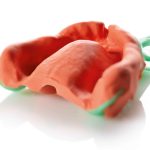
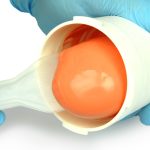
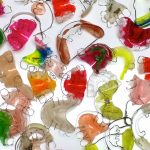
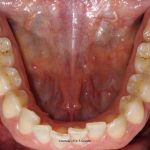

 Zhermack SpA has been one of the most important producers and international distributors of alginates, gypsums and silicone compounds for the dental sector for over 40 years. It has also developed solutions for the industrial and wellbeing sectors.
Zhermack SpA - Via Bovazecchino, 100 - 45021 Badia Polesine (RO), Italy.
Zhermack SpA has been one of the most important producers and international distributors of alginates, gypsums and silicone compounds for the dental sector for over 40 years. It has also developed solutions for the industrial and wellbeing sectors.
Zhermack SpA - Via Bovazecchino, 100 - 45021 Badia Polesine (RO), Italy.


